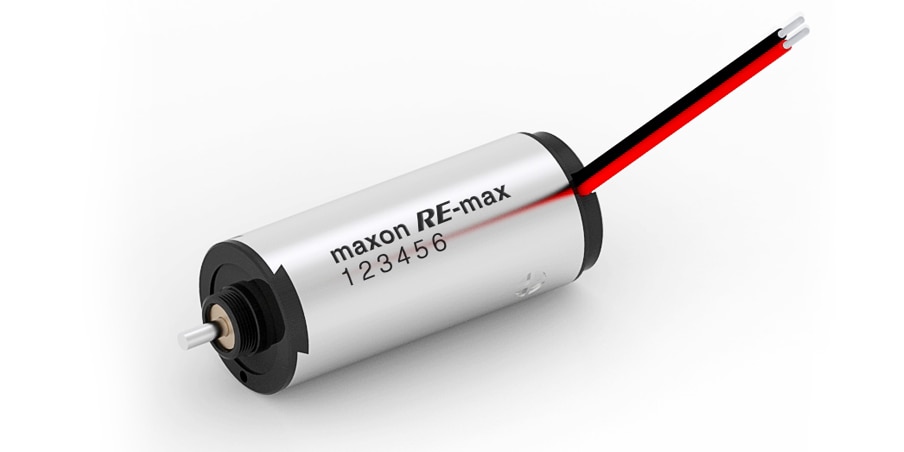Details
NRND
RE-max 13 Ø13 mm, Precious Metal Brushes, CLL, 2.5 Watt, with cables
Part number 203946

| Price scales | Quantity | Price per unit |
|---|---|---|
| Prices excluding VAT and shipping costs | 1-4 | €84.42 |
| 5-19 | €77.05 | |
| 20-49 | €70.63 | |
| from 50 | On request |
NRND (Not Recommended for New Designs): These products continue to be available, but are not recommended for new projects. Our sales team will be happy to suggest alternatives.
Specifications
Technical illustrations
- Dimension drawing
Information: Drawings are not to scale.
| Values at nominal voltage | |
| Nominal voltage | 12 V |
| No load speed | 11100 rpm |
| No load current | 6.62 mA |
| Nominal speed | 7670 rpm |
| Nominal torque (max. continuous torque) | 2.71 mNm |
| Nominal current (max. continuous current) | 0.27 A |
| Stall torque | 8.73 mNm |
| Stall current | 0.852 A |
| Max. efficiency | 84 % |
| Characteristics | |
| Terminal resistance | 14.1 Ω |
| Terminal inductance | 0.356 mH |
| Torque constant | 10.2 mNm/A |
| Speed constant | 933 rpm/V |
| Speed / torque gradient | 1280 rpm/mNm |
| Mechanical time constant | 7.26 ms |
| Rotor inertia | 0.541 gcm² |
| Thermal data | |
| Thermal resistance housing-ambient | 37 K/W |
| Thermal resistance winding-housing | 10 K/W |
| Thermal time constant winding | 6.97 s |
| Thermal time constant motor | 277 s |
| Ambient temperature | -20...+65 °C |
| Max. winding temperature | +85 °C |
| Mechanical data | |
| Bearing type | sleeve bearing |
| Max. speed | 19000 rpm |
| Axial play | 0.05 - 0.15 mm |
| Radial play | 0.014 mm |
| Max. axial load (dynamic) | 0.8 N |
| Max. force for press fits (static) | 35 N |
| Max. radial load | 1.4 N, 5 mm from flange |
| Other specifications | |
| Number of pole pairs | 1 |
| Number of commutator segments | 7 |
| Number of autoclave cycles | 0 |
| Product | |
| Weight | 24 g |


